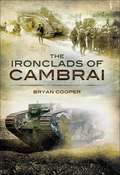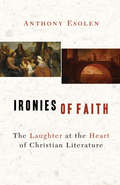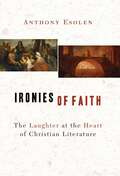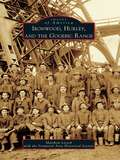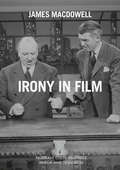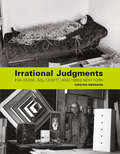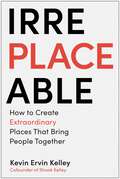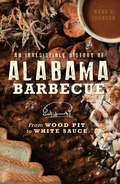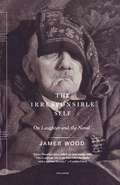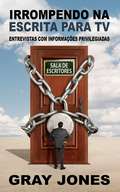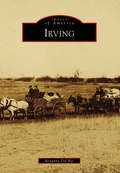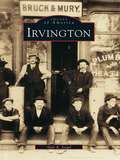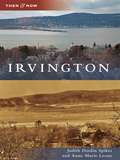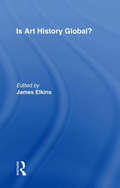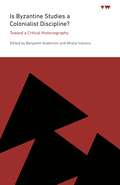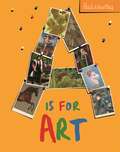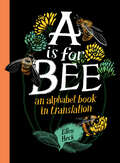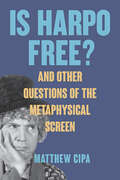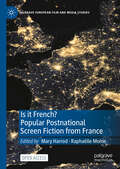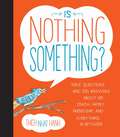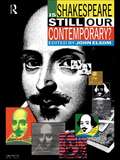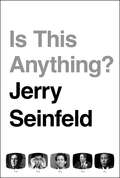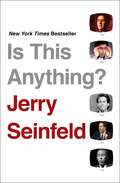- Table View
- List View
The Ironclads of Cambrai: The First Great Tank Battle (Cassell Military Paperbacks Ser.)
by Bryan CooperWhen tanks, the newly invented British weapon, were used for the first time in a mass attack on November 20 1917, they not only achieved one of the most remarkable successes of the First World War but set the pattern for the future of mechanized warfare. For the first time in three years of bloody trench warfare, epitomized by the slaughter at Passchendaele which was then reaching its climax, tanks brought about a breakthrough of the massive German defense system of the Hindenburg Line, followed up by British infantry and cavalry divisions. They were supported for the first time by low flying fighter aircraft of the Royal Flying Corps. The initial victory at Cambrai brought cheering crowds into the streets of London and the ringing of church bells in celebration. In seemed possible that the success might bring about the final defeat of Germany. But the British High Command failed to exploit the success. Generals who still dreamt of massive cavalry charges had not had much faith in this strange new weapon that had been brought to them funded initially by the Royal Navy at the behest of Winston Churchill who was then First Lord of the Admiralty and did see its value. The High Command did not really believe the breakthrough was possible and tragically miscalculated the necessary steps to follow it up. Within days the Germans counterattacked and regained much of the ground that the British had won. What could have been the final victory was delayed for another year.
Ironies of Faith: The Laughter at the Heart of Christian Literature
by Anthony EsolenIn Ironies of Faith, celebrated Dante scholar and translator Anthony Esolen provides a profound meditation upon the use and place of irony in Christian art and in the Christian life. Beginning with an extended analysis of irony as an essentially dramatic device, Esolen explores those manifestations of irony that appear prominently in Christian thinking and art: ironies of time (for Christians believe in divine Providence, but live in a world whose moments pass away); ironies of power (for Christians believe in an almighty God who took on human flesh, and whose "weakness" is stronger than our greatest enemy, death); ironies of love (for man seldom knows whom to love, or how, or even whom it is that in the depths of his heart he loves best); and the figure of the Child (for Christians ever hear the warning voice of their Savior, who says that unless we become like unto one of these little ones, we shall not enter the Kingdom of God).Esolen's finely wrought study draws from Augustine (Confessions), Dante (The Divine Comedy), Shakespeare (The Tempest), and Tolkien ("Leaf, By Niggle"); Francois Mauriac (A Kiss for the Leper), Milton (Paradise Lost), and Alessandro Manzoni (The Betrothed); the poems of George Herbert and Gerard Manley Hopkins, and Edmund Spenser (Amoretti); Charles Dickens (A Christmas Carol), Dostoyevsky (The Brothers Karamazov), and the anonymous author of the medieval poem Pearl, among other works. Readers who treasure the Christian literary tradition should not miss this illuminating book.
Ironies of Faith: The Laughter at the Heart of Christian Literature
by Anthony EsolenIn Ironies of Faith, celebrated Dante scholar and translator Anthony Esolen provides a profound meditation upon the use and place of irony in Christian art and in the Christian life. Beginning with an extended analysis of irony as an essentially dramatic device, Esolen explores those manifestations of irony that appear prominently in Christian thinking and art: ironies of time (for Christians believe in divine Providence, but live in a world whose moments pass away); ironies of power (for Christians believe in an almighty God who took on human flesh, and whose "weakness" is stronger than our greatest enemy, death); ironies of love (for man seldom knows whom to love, or how, or even whom it is that in the depths of his heart he loves best); and the figure of the Child (for Christians ever hear the warning voice of their Savior, who says that unless we become like unto one of these little ones, we shall not enter the Kingdom of God). Esolen's finely wrought study draws from Augustine, Dante, Shakespeare, Tolkien, Mauriac, Milton Herbert, Hopkins, and Dostoyevsky, among others, including the anonymous author of the medieval poem Pearl. Such authors, Anthony Esolen believes, teach us that the last laugh is on the world, because that grim old world, taking itself so seriously that even its laughter is a sneer, will finally - despite its proud resistance - be redeemed. That is the ultimate irony of faith. Readers who treasure the Christian literary tradition should not miss this illuminating book.
Ironwood, Hurley, and the Gogebic Range
by Matthew Liesch Ironwood Area Historical SocietySituated on the south shore of Lake Superior, the Gogebic Iron Range of Michigan and Wisconsin exudes a strong sense of place. During the 1880s, a mining boom lured settlers, investment, and controversy. Investors from Milwaukee, Chicago, and Cleveland hoped to become rich, but many were pulled into scams or poorly managed mines and ended up losing their money. After iron stocks crashed, mining investors were more cautious. Many mining locations were abandoned, but towns such as Ironwood, Bessemer, Wakefield, and Hurley grew. For over 80 years, iron mining gave the Gogebic Range distinctive ethnicity and settlement patterns resulting in its unique cultural landscapes. The physical setting enhances the drama of the Gogebic. Lake-effect snowfall results in picturesque yet harsh winters, and thundering waterfalls have long attracted visitors.
Irony in Film (Palgrave Close Readings in Film and Television)
by James MacdowellIrony in Film is the first book about ironic expression in this medium. We often feel the need to call films or aspects of them ironic; but what exactly does this mean? How do films create irony? Might certain features of the medium help or hinder its ironic potential? How can we know we are justified in dubbing any film or moment ironic? This book attempts to answer such questions, investigating in the process crucial and under-examined issues that irony raises for our understanding of narrative filmmaking.A much-debated subject in other disciplines, in film scholarship irony is habitually referred to but too seldom explored. Combining in-depth theorising with detailed close analysis, this pioneering study asks what ironic capacities films might possess, how film style may be used ironically, and what role intention should play in film interpretation. The proposed answers have significance for our understanding of not only ironic filmmaking, but the nature of expression in this medium.
Irrational Judgments
by Kirsten SwensonIrrational Judgments examines the close friendship and significant exchange of ideas between Eva Hesse (1936-1970) and Sol LeWitt (1928-2007) in New York City during the 1960s. Taking its title from LeWitt's statement "Irrational judgments lead to new experience," this book examines the breakthroughs of the artists' intertwined careers, offering a new understanding of minimal, post-minimal, and conceptual art amid the era's political and social upheavals. Kirsten Swenson offers the first in-depth discussion of the early critical developments of each artist: LeWitt's turn from commercial design to fine art, and Hesse's move from expressionist painting to reliefs and sculpture. Bringing together a wealth of documents, interviews, and images--many published here for the first time--this handsome publication presents an insightful account of the artists' influence on and support for each other's pursuit of an experimental practice. Swenson's analysis expands our understanding of the artists' ideas, the importance of their work, and, more broadly, the relationship of the 1960s New York art world to gender politics, the Vietnam War, and the city itself.
Irreplaceable: How to Create Extraordinary Places that Bring People Together
by Kevin Ervin KelleyAn Adam Grant Summer Reading Pick 2024Do we still need physical places like grocery stores, restaurants, and office buildings? Or will the &“Replacement Economy&” led by the tech titans and retail giants wipe out these venues in their rapid ascent to unicorn status? What about museums, universities, and performing arts venues? Considering the power of technology today, can&’t we replace these relics with faster, cheaper, and more efficient online tools, apps, and AI? Through engaging storytelling, human behavior insights, and proven design techniques, Kevin Kelley—an attention architect and cofounder of Shook Kelley, a strategic design firm that pioneered the field of &“convening&”—unfolds why physical places are essential to civil society, business, and community. In these pages, he reveals what it takes for brick-and-mortar establishments to attract an audience and maintain a competitive edge in our increasingly digital world, whether you&’re a: Retail leader or institutional manager trying to attract people to your offering while keeping the disruptors at bay Student of design who values social facilitation over object-oriented design Concerned citizen worried about the loss of community and civility Irreplaceable offers a welcomed antidote to the anti-human digital future crushing our main streets and infiltrating every corner of our lives. It provides a comprehensive roadmap for creating human experiences that have the power to convene and bring friends, neighbors, and strangers together in prosocial environments in ways the digital replacements can&’t replicate.
Irresistible History of Alabama Barbecue, An: From Wood Pit To White Sauce (American Palate)
by Mark A. JohnsonFrom Muscle Shoals to Mobile, Alabamians enjoy fabulous barbecue at home, at club meetings and at countless eateries. In the 1820s, however, a group of reformers wanted to eliminate the southern staple because politicians used it to entice voters. As the state and nation changed through wars and the civil rights movement, so did Alabama barbecue. Alabama restaurants like Big Bob Gibson’s, Dreamland and Jim ’n Nick’s have earned fans across the country. Mark A. Johnson traces the development of the state’s famous food from the earliest settlement of the state to the rise of barbecue restaurants.
The Irresponsible Self: On Laughter and the Novel
by James Wood"James Wood has been called our best young critic. This is not true. He is our best critic; he thinks with a sublime ferocity." - Cynthia Ozick. Following the collection The Broken Estate-- which established James Wood as the leading critic of his generation-- The Irresponsible Self confirms Wood's preeminence, not only as a discerning judge but also as an appreciator of contemporary novels.
Irrompendo na escrita para TV: entrevistas com informações privilegiadas
by Gray Jones Ana Claudia Antunes"Irrompendo na escrita para TV: entrevistas com informações privilegiadas" rompe mitos sobre como irromper nas salas dos roteiristas de Hollywood, e os substitu com informações privilegiadas e um plano de batalha sólido. Saiba como reconhecer o território, dicas e estratégias daqueles que vieram antes, oportunidades para aproveitar e armadilhas a evitar. Você vai encontrar um mapa de todas as ferramentas que você precisa para começar, e os caminhos tentados e testados para o seu objetivo. Além desses recursos, o livro apresenta transcrições completas de cinco entrevistas no podcast de roteiristas de TV: * Carole Kirschner (Plano de Jogo de Hollywood, Programa de Treinamento de showrunner) * Rick Muirragui (Suits, The Good Guys) * Matt MacLennan (The Listener, Call Me Fitz, Ecstasy de Irvine Welsh) * Aaron Ginsburg (The Finder, The Good Guys, The 100) * Bob DeRosa (Par Perfeito, Crimes do Colarinho Branco, Ligados Pelo Crime) Há muitos insights aplicáveis ao recurso para escrita de filmes também. Se você quiser irromper nesta indústria emocionante, comece aqui!
Irving (Images of America)
by Roxanne Del RioIrving, Texas, was founded in 1903 by two eager individuals, J.O. Schulze and Otis Brown, of the Chicago, Rock Island & Gulf Railway Company. Beginning as an agrarian area of farmland, cotton, and cattle, Irving grew to include industrial facilities while persevering through the financial difficulties resulting from the Civil War and the two world wars. Irving maintained its growth when other cities in the United States could not. Schulze and Brown recognized the importance of utilizing both agricultural and industrial resources in creating and sustaining a successful city. Remnants of early communities, such as Bear Creek, Elm, Estelle, Kit, Sowers, Twin Wells, and Union Bower, can still be identified. Situated between Dallas and Fort Worth, Irving is a robust and thriving city that has greatly contributed to the creation and preservation of Texas history.
Irvington (Images of America)
by Alan A. SiegelLike a cherished old family album, this collection of more than two hundred fascinating photographs of Irvington brings to life people, places, and events of a bygone era. Although the Irvington depicted here--from the time of the Civil War to the 1970s--has changed significantly, its memory remains fresh in the minds of past and present residents alike. Culled from the extensive collections of the Irvington Public Library and Irvington Historical Society, this superb assemblage of images will stimulate many memories. Alan A. Siegel takes us on a delightful journey, starting when Irvington was a tiny village known as Camptown, to the twentieth century when Irvington was transformed almost overnight into a busy industrial and residential suburb of Newark. Shown too are the vital contributions made by successive waves of immigrants who flooded into Irvington during the first half of the twentieth century.
Irvington (Then and Now)
by Judith Doolin Spikes Anne Marie LeoneIrvington, a small village 20 miles north of New York City, overlooks the widest point of the Hudson River. The 19th-century castles and chateaus built along "America's Rhine" have been replaced, yet Main Street remains almost exactly as it was in 1900.
Is Art History Global? (The Art Seminar #Vol. 3)
by James ElkinsThis is the third volume in The Art Seminar, James Elkin's series of conversations on art and visual studies.Is Art History Global? stages an international conversation among art historians and critics on the subject of the practice and responsibility of global thinking within the discipline. Participants range from Keith Moxey of Columbia University to Cao Yiqiang, Ding Ning, Cuautemoc Medina, Oliver Debroise, Renato Gonzalez Mello, and other scholars.
Is Byzantine Studies a Colonialist Discipline?: Toward a Critical Historiography (ICMA Books | Viewpoints)
by Benjamin Anderson and Mirela IvanovaIs Byzantine Studies a colonialist discipline? Rather than provide a definitive answer to this question, this book defines the parameters of the debate and proposes ways of thinking about what it would mean to engage seriously with the field’s political and intellectual genealogies, hierarchies, and forms of exclusion.In this volume, scholars of art, history, and literature address the entanglements, past and present, among the academic discipline of Byzantine Studies and the practice and legacies of European colonialism. Starting with the premise that Byzantium and the field of Byzantine studies are simultaneously colonial and colonized, the chapters address topics ranging from the material basis of philological scholarship and its uses in modern politics to the colonial plunder of art and its consequences for curatorial practice in the present. The book concludes with a bibliography that serves as a foundation for a coherent and systematic critical historiography. Bringing together insights from scholars working in different disciplines, regions, and institutions, Is Byzantine Studies a Colonialist Discipline? urges practitioners to reckon with the discipline’s colonialist, imperialist, and white supremacist history.In addition to the editors, the contributors to this volume include Andrea Myers Achi, Nathanael Aschenbrenner, Bahattin Bayram, Averil Cameron, Stephanie R. Caruso, Şebnem Dönbekci, Hugh G. Jeffery, Anthony Kaldellis, Matthew Kinloch, Nicholas S. M. Matheou, Maria Mavroudi, Zeynep Olgun, Arietta Papaconstantinou, Jake Ransohoff, Alexandra Vukovich, Elizabeth Dospěl Williams, and Arielle Winnik.
Is Diss a System?: A Milt Gross Comic Reader (Goldstein-Goren Series in American Jewish History #16)
by Ari Y. KelmanMilt Gross (1895-1953), a Bronx-born cartoonist and animator, first found fame in the late 1920s, writing comic strips and newspaper columns in the unmistakable accent of Jewish immigrants. By the end of the 1920s, Gross had become one of the most famous humorists in the United States, his work drawing praise from writers like H. L. Mencken and Constance Roarke, even while some of his Jewish colleagues found Gross’ extreme renderings of Jewish accents to be more crass than comical.Working during the decline of vaudeville and the rise of the newspaper cartoon strip, Gross captured American humor in transition. Gross adapted the sounds of ethnic humor from the stage to the page and developed both a sound and a sensibility that grew out of an intimate knowledge of immigrant life. His parodies of beloved poetry sounded like reading primers set loose on the Lower East Side, while his accounts of Jewish tenement residents echoed with the mistakes and malapropisms born of the immigrant experience.Introduced by an historical essay, Is Diss a System? presents some of the most outstanding and hilarious examples of Jewish dialect humor drawn from the five books Gross published between 1926 and 1928—Nize Baby, De Night in de Front from Chreesmas, Hiawatta, Dunt Esk, and Famous Fimmales—providing a fresh opportunity to look, read, and laugh at this nearly forgotten forefather of American Jewish humor.
A is for Art (National Gallery Paul Thurlby #1)
by Paul ThurlbyA beautiful and informative alphabet book created in association with the National Galley - perfect for children and adults alike.See the sights of the National Gallery as never before - through the eyes of award-winning illustrator Paul Thurlby. From Da Vinci to Monet, from medieval masters to the French Impressionists, come on a inspiring tour of one of the world's most-visited museums. Enjoy masterpieces like Van Gogh's Sunflowers and Constable's The Hay Wain as well discovering some lesser known gems. This unique book is packed to bursting with the world's greatest paintings and the stories behind them.Praise for Paul Thurlby's Numbers: 'Stunning collection.' Guardian'Paul Thurlby's prints are so ludicrously beautiful that I am seriously tempted to blow the budget, order the whole lot and paper a wall with them.' India Knight, journalist and author
A Is for Bee: An Alphabet Book in Translation
by Ellen HeckBEST OF THE YEARThe New York Times · Booklist Top of the List · World Kid Lit What letter does the word bee start with? If you said "B" you’re right – in English! But in many, many languages, it actually starts with A. Bee is Aṅụ̄ in Igbo, Aamoo in Ojibwe, Abelha in Portugese. And Arı in Turkish. Come and explore the gorgeous variations in the ways we talk about familiar things, unified and illuminated through Ellen Heck’s eye-catching, graphic scratchboard details and hidden letterforms. P R A I S E ★ "A gorgeous collection for linguists of all ages." —Booklist (starred) "The ultimate demonstration of inclusion, and the beauty of world languages. This lavishly illustrated multilingual alphabet book isn’t about inclusion, it is inclusion." —The New York Times "Kaleidoscopic and delightful. Any lover of language, or any child who likes new sounds, will be entranced." —Kory Stamper, NYT "Beautiful. A book that presents an understanding far beyond the usual. Marvelous" —Betsy Bird, SLJ Fuse 8
Is Harpo Free?: And Other Questions of the Metaphysical Screen (SUNY series, Horizons of Cinema)
by Matthew CipaIs Harpo Free? is a lively appreciation of film and television's ability to artistically explore concepts typical of philosophical metaphysics, such as free will, causality, and personal identity. Rather than using films and television programs as vehicles for philosophical arguments, the book instead celebrates the artistic ways in which they give life to various metaphysical concepts and how the artistic expression of these concepts and ideas helps us understand ourselves, the world, and our place within it. Through close analysis of a varied selection of works and their use of narrative, form, and style, Is Harpo Free? exemplifies a novel approach to appreciating the philosophical substance of films and television programs. Films and television programs discussed include A Night at the Opera; Run, Lola, Run; Shane; Harvey; Three Colours: Blue; The Americans; Dark; and Fargo.
Is it French? Popular Postnational Screen Fiction from France (Palgrave European Film and Media Studies)
by Mary Harrod Raphaëlle MoineThis book investigates the recently accelerated phenomenon of mainstream French film and serial television’s remarkable popularity not only within but – more novelly for European audiovisual narratives – outside the domestic context. Treating changes that have taken place in France's production landscape during the mass rollout of global streaming platforms as revelatory of broader tendencies in media production and circulation in Europe and beyond, the collection explores emergent influential players (Omar Sy, Camille Cottin, Alexandre Aja and Fanny Herrero), companies such as Netflix and Gaumont, and new genres, identities and representations on screen. It thus draws together a body of new research by international experts in French and European media production to analyse popular film and television series from France through a postnational lens with regards to both economic and institutional norms and to culture as a whole.
Is Landscape... ?: Essays on the Identity of Landscape
by Doherty and Charles WaldheimIs Landscape . . . ? surveys multiple and myriad definitions of landscape. Rather than seeking a singular or essential understanding of the term, the collection postulates that landscape might be better read in relation to its cognate terms across expanded disciplinary and professional fields. The publication pursues the potential of multiple provisional working definitions of landscape to both disturb and develop received understandings of landscape architecture. These definitions distinguish between landscape as representational medium, academic discipline, and professional identity. Beginning with an inquiry into the origins of the term itself, Is Landscape . . . .? features essays by a dozen leading voices shaping the contemporary reading of landscape as architecture and beyond.
Is Nothing Something?: Kids' Questions and Zen Answers About Life, Death, Family, Friendship, and Every thing in Between
by Thich Nhat HanhIn Is Nothing Something? Zen Master Thich Nhat Hanh answers heartfelt, difficult, and funny questions from children of all ages. Illustrated with original full-color artwork by Jessica McClure, Is Nothing Something? will help adults plant the seeds of mindfulness in the young children in their lives. Beginning with the most basic questions, "What is important in life?" and "Why is my brother mean to me?" and progressing through issues that we all wrestle with, such as "How do I know if I really love somebody?", "How long am I going to live?", and "What does God look like?", each page presents a question with a short answer from Thich Nhat Hanh, appropriate for beginning readers to work with on their own. The back of the book has the first complete children’s biography of Thich Nhat Hanh, along with basic, kid-friendly instructions for mindful breathing and mindful walking. Both humorous and profound, Is Nothing Something? is the perfect resource for kids with questions, adults looking to answer them, and anyone with questions of their own.
Is Shakespeare Still Our Contemporary?
by John ElsomFirst published in 2004. Routledge is an imprint of Taylor & Francis, an informa company.
Is This Anything?
by Jerry SeinfeldThe first book in twenty-five years from Jerry Seinfeld features his best work across five decades in comedy. Since his first performance at the legendary New York nightclub &“Catch a Rising Star&” as a twenty-one-year-old student in autumn of 1975, Jerry Seinfeld has written his own material and saved everything. &“Whenever I came up with a funny bit, whether it happened on a stage, in a conversation, or working it out on my preferred canvas – the big yellow legal pad – I kept it in one of those old-school accordion folders,&” Seinfeld writes. &“So I have everything I thought was worth saving from forty-five years of hacking away at this for all I was worth.&” For this book, Jerry Seinfeld has selected his favourite material, organised decade by decade. In page after hilarious page, one brilliantly crafted observation after another, readers will witness the evolution of one of the great comedians of our time and gain new insights into the thrilling but unforgiving art of writing stand-up comedy.
Is This Anything?
by Jerry SeinfeldThe first book in twenty-five years from Jerry Seinfeld features his best work across five decades in comedy. <P><P>Since his first performance at the legendary New York nightclub “Catch a Rising Star” as a twenty-one-year-old college student in fall of 1975, Jerry Seinfeld has written his own material and saved everything. “Whenever I came up with a funny bit, whether it happened on a stage, in a conversation, or working it out on my preferred canvas, the big yellow legal pad, I kept it in one of those old school accordion folders,” Seinfeld writes. “So I have everything I thought was worth saving from forty-five years of hacking away at this for all I was worth.” <P><P>For this book, Jerry Seinfeld has selected his favorite material, organized decade by decade. In page after hilarious page, one brilliantly crafted observation after another, readers will witness the evolution of one of the great comedians of our time and gain new insights into the thrilling but unforgiving art of writing stand-up comedy. <P><P><b>A New York Times Bestseller</b>
